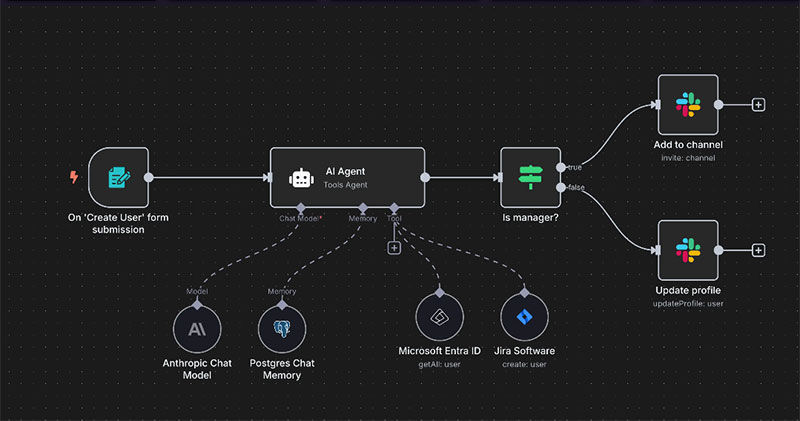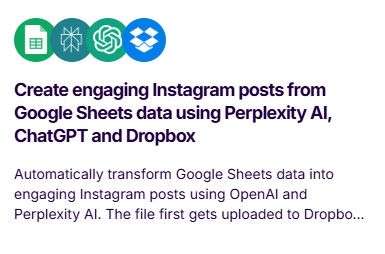In 2025, n8n and Make have become two of the most discussed solutions in the no-code/low-code automation space. They serve similar purposes but follow different approaches: open-source versus SaaS, deep customization versus maximum simplicity. In this review, we compare them across key criteria—cost, features, scalability, AI support, self-hosting capability, and learning curve—so you can choose the right tool for your needs.
Who this comparison is for
This review will be useful for startup founders, internal operations teams, and freelance automation specialists. It’s especially relevant for those facing:
-
increasing automation costs,
-
operation count limits,
-
data security concerns,
-
delays in deploying workflows to production.
Whether you’re looking to scale, want more control, or prefer a simple solution with minimal overhead—this guide will help you find the right direction.
Comparison methodology
We compare both platforms from a cost-per-operation perspective. A real-life scenario was used for both: automating a CRM task that runs 2,500 times per month.
We measured:
-
total cost,
-
setup time,
-
flexibility when integrating with external services.
This approach gives a fair view of not only what the platforms can do, but also how much they actually cost in real use.
Summary: key advantages
| Advantages of n8n | Advantages of Make |
|---|---|
| Open-source code and full customization | Very low barrier to entry |
| Scales cost-effectively with self-hosting | Large library of integrations (2000+) |
| AI agent and RAG support | Intuitive drag-and-drop interface |
| JavaScript code support | Quick to get started |
| Centralized error handling | Built-in security features and SSO |
| Handles PDFs and unstructured data well | Optimized for typical business scenarios |

n8n is an open-source platform launched in 2019. Its core philosophy is flexibility, control, and customization. You can host it on your own server for free, adapt it to your team’s needs, write your own code, and build custom integrations.
The platform is built around basic components:
-
Workflow — a chain of automated steps,
-
Node — an individual action,
-
Execution — a single run of a workflow,
-
Credentials — access data for external services.

Since 2024, n8n has been actively developing AI agents. These elements go beyond automation and enable contextual decision-making—for example, analyzing a client’s message and sending a relevant response without human involvement. This represents a strong move toward intelligent automation.
Overview of the Make platform (formerly Integromat)

Make has been around since 2012 and offers a fully cloud-based no-code solution. The platform focuses on fast deployment and visual simplicity. You simply drag modules onto a canvas, connect them with arrows—and the automation is ready.
Key concepts:
-
Scenario — the entire automation workflow,
-
Module — a single step within the scenario,
-
Operation — one completed action (used for billing),
-
Bundle / Filter / Router — tools for handling data and conditions.
Make is ideal for new users and common use cases: it offers a wide range of prebuilt integrations, a user-friendly interface, fast support, and built-in security. However, this convenience comes at a price: as usage grows, costs increase exponentially.
Detailed feature comparison
| Parameter | n8n | Make | Winner |
|---|---|---|---|
| Self-hosting | ✅ Yes | ❌ No | n8n |
| JavaScript editor | ✅ Built-in | ❌ Not available | n8n |
| Integration library | ~1000 | 2000+ | Make |
| Custom connectors | ✅ Full flexibility | ⚠️ HTTP requests only | n8n |
| Pricing model | ⚠️ Per execution | ⚠️ Per operation | Depends on use case |
| Execution limits | ✅ None (self-host) | ❌ Yes | n8n |
| User roles and access | ⚠️ Basic control | ✅ Advanced access + SSO | Make |
| Data security and storage | ⚠️ Managed by the user | ✅ Cloud-based, certified | Make |
In-depth analysis by category
Pricing
n8n self-host is the most cost-effective option when workloads grow. A personal server costs around $10–15/month and can handle tens of thousands of executions. The cloud version becomes more expensive, but still often cheaper than Make at higher volumes.
Make is convenient but its operation-based pricing model leads to higher costs as complexity and volume increase.
Takeaway: n8n is more economical for experienced teams with growing needs. Make is simpler and more accessible for small-scale use.
Support
Make offers responsive support as part of its cloud service, which is important for users who don’t want to manage technical issues themselves.
n8n users are responsible for system stability when self-hosting. Most support comes from community forums and documentation, though cloud plans offer paid support.
Takeaway: Make is better for non-technical users. n8n requires tech skills but provides more independence.
Scalability
Make is easy to scale technically, but costs rise sharply with more operations.
n8n scales more affordably. With self-hosting, cost stays flat unless server resources are maxed out.
Takeaway: n8n offers better long-term cost control. Make is fine for small setups but gets expensive at scale.
Extensibility
n8n allows users to write custom code, build new nodes, and create tailored integrations.
Make limits users to prebuilt modules and basic HTTP requests.
Takeaway: n8n is better for complex, custom needs. Make suits users who want prebuilt simplicity.
Developer experience (Dev UX)
Make is designed for ease of use. Its drag-and-drop interface and visual logic are accessible even to beginners.
n8n has a steeper learning curve but offers more power and control.
Takeaway: Make is ideal for beginners. n8n suits users who need depth and precision.
Practical case: AI-based email categorization
Scenario: A company receives incoming emails from customers and wants to automatically detect the topic of each message using AI (e.g., a GPT model), then sort them by category (order, complaint, inquiry, etc.).
n8n setup:
-
Connect to Gmail or IMAP
-
Send the email content to GPT
-
Receive a category label
-
Forward email based on category
-
Log the result in a spreadsheet
Make setup:
-
Use Gmail module
-
Send the content to GPT via HTTP
-
Receive AI response
-
Route based on category using Router
-
Save result via Google Sheets module
Monthly cost for 2,500 emails:
-
n8n self-host: ~$10
-
n8n Cloud: ~$26
-
Make: ~$18.80 (Core plan, 10,000 operations)
Conclusion:
n8n is more scalable and flexible when self-hosted. Make is easier to adopt and efficient for simpler workflows.
10 key differences
| # | Parameter | Winner |
|---|---|---|
| 1 | Self-hosting | n8n ✅ |
| 2 | Ease of setup | Make ✅ |
| 3 | Scalability and long-term pricing | n8n ✅ |
| 4 | Integration library | Make ✅ |
| 5 | Custom connectors and code | n8n ✅ |
| 6 | AI agents and unstructured data | n8n ✅ |
| 7 | Support availability | Make ✅ |
| 8 | Error handling | n8n ✅ |
| 9 | Enterprise-grade security & compliance | Make ✅ |
| 10 | Developer experience (Dev UX) | Depends on user profile |
Financial analysis and scalability
| Volume | n8n Cloud | n8n Self-host | Make |
|---|---|---|---|
| 2,500 executions | ~$26 | ~$10 | ~$18.80 |
| 10,000 | ~$55 | ~$10–15 | ~$50–55 |
| 50,000 | ~$110+ | ~$20 | ~$250–300 |
Conclusion: At 10,000+ executions per month, n8n becomes significantly more cost-efficient, especially when self-hosted.
How to choose the right platform
-
If you’re a beginner → Make
-
If you’re scaling fast → n8n (self-hosted)
-
If compliance and SSO are required → Make (Teams/Enterprise)
-
If you need complex workflows or custom logic → n8n
Try both platforms on a real use case—results will speak for themselves.
Frequently Asked Questions (FAQ)
1. How much does automation really cost with n8n and Make?
With Make, you pay per operation—costs can rise quickly. With n8n, you can save money using the self-hosted version: a $10–15/month server can handle tens of thousands of executions. The cloud version is more expensive but often still cheaper than Make at scale.
2. How hard is it to migrate from Make to n8n?
Migration takes time: you’ll need to manually rebuild logic, set up APIs, and map variables. However, most scenarios are easy to replicate in n8n, especially if you’re using standard integrations. The hardest part is working with custom HTTP requests and authentication. Make users typically adjust to n8n within 1–2 weeks.
3. What’s required to run n8n on your own server?
You’ll need a VPS or cloud server (e.g., DigitalOcean, Hetzner) with 1–2 GB of RAM and support for Docker or Node.js. Setup takes ~30 minutes. You’ll need to manage updates, backups, and monitoring. If you lack technical resources, it’s better to start with the cloud version.
4. Are there limits on the number of scenarios and executions?
Make has strict operation limits per pricing tier. n8n’s self-hosted version has no limits (only server capacity matters). The cloud version has limits on executions and workflows, but they’re more predictable than Make’s per-operation pricing.
5. Do the platforms support localization?
Make’s interface is partially translated; most documentation is in English. n8n is currently English-only, but its open-source nature allows for UI customization, including localization. Both platforms require some basic English to set up workflows.
6. How secure is data handling and storage?
Make is a cloud service with GDPR and SOC2 certifications, encryption, and secure authentication. n8n self-host gives you full control over data, but security depends entirely on your own infrastructure and maintenance.
7. What kind of support is available?
Make offers built-in support with paid plans, including a knowledge base and live chat. n8n has community support, documentation, and forums. Cloud users get access to premium support, but self-hosted users must rely on community resources.
Conclusion
Both Make and n8n are capable automation platforms—but they work differently. The real difference isn’t what they can do, but under what conditions: how they scale, how flexible they are, and who manages reliability.
If you want control and cost efficiency at scale—go with n8n.
If you need simplicity and fast setup—choose Make.
The best way to decide is to test both on a real use case. Even one small project will give you more clarity than any feature comparison.
